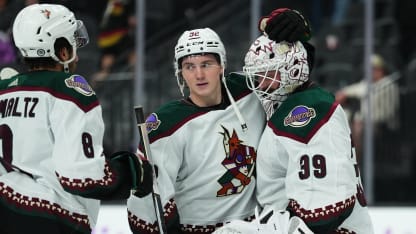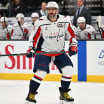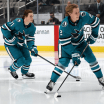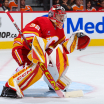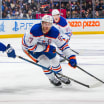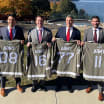Here is the Dec. 6 edition of the weekly NHL.com mailbag, where we answer your questions asked on X. Send your questions to @drosennhl and @NHLdotcom, and tag it with #OvertheBoards.
Which team thus far has been the most pleasant surprise and which has been the most disappointing head scratcher? -- @baYsYckwrYteboY
Most pleasant surprise: Arizona Coyotes
Most disappointing head scratcher: Buffalo Sabres
The Coyotes have won five games in a row, all against the last five teams to win the Stanley Cup. The streak started with a 2-0 win at the Vegas Golden Knights (2023 champions) on Nov. 25. The past four have come at home at Mullett Arena: 3-1 against the Tampa Bay Lightning (2020 and 2021 champs), 4-3 in overtime against the Colorado Avalanche (2022), 4-1 against the St. Louis Blues (2019) and 6-0 against the Washington Capitals (2018). Add it up, and the Coyotes have won the five games by a combined 19-5.
Maybe the biggest surprise is the fact that they're doing it with Connor Ingram in net and slowly taking over as the No. 1 goalie. Ingram is 5-0-0 with a 1.00 goals-against average, .968 save percentage and two shutouts in the five-game winning streak. He is 11-3-0 with a 2.23 GAA and .930 save percentage in 15 games. If Ingram keeps it up, he will play his way into the Vezina Trophy conversation. He had seven wins in 30 NHL games entering the season.
Arizona is 11th in goals per game (3.33) and tied for 10th in goals-against per game (2.83). It has the fifth-ranked power play (26.8 percent) and is 14th on the penalty kill (81.2 percent). It's time we start talking more about the Coyotes for what they're doing on the ice instead of where they play their home games.
I picked the Sabres to make the Stanley Cup Playoffs. I spoke with forwards Tage Thompson and JJ Peterka on separate occasions before training camp and they each were confident that the time was now. But the Sabres have been wildly inconsistent, which is the sign of a young team that still hasn't figured it out. You'll get a game like their 5-1 win against the New York Rangers on Nov. 27, when they play together, strong in front of the net and for 60 minutes. You watch that and think maybe they can build off that win, that it should be repeatable because it wasn't a fluke or based on one player having a star performance. It was a team effort. It came after a 7-2 loss to the New Jersey Devils, so you think maybe the Sabres got it figured out. But then they lose 6-4 at St. Louis and 6-2 at the Carolina Hurricanes. That can't happen to a team that needs to take the next step this season. The next step is to be a playoff team. The Sabres missed by one point last season. They're running out of time to turn things around.
